Oilfield chemicals used in the exploration, drilling, production, and refining of oil and gas. Used to improve the efficiency of oilfield operations and meet the needs of service companies.

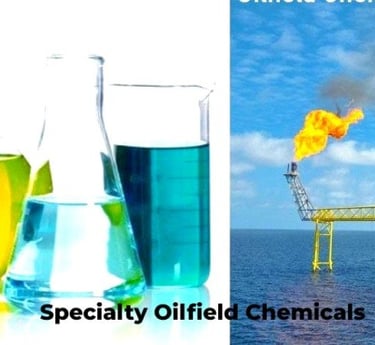
Prevent corrosion in surface equipment, drill strings, and surface casings. Examples include zinc carbonate, zinc chromate, hydrated lime, and fatty amine salts of alkyl phosphates.
Improve the clarity of water and remove impurities.
Formulated chemical compounds used in various stages of oil and gas production.
Corrosion inhibitors:
Flocculants:
Specialty oilfield chemicals:
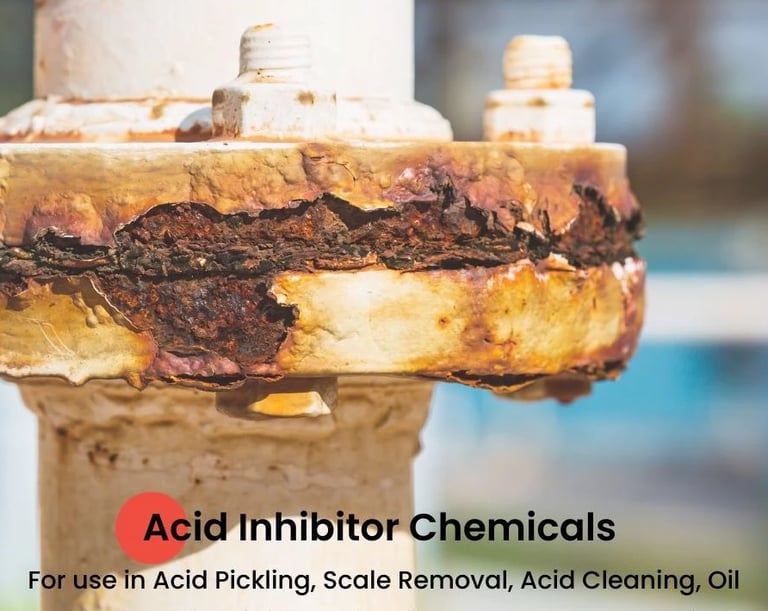

Acid corrosion inhibitors
Chemistry : Formulated blend of acetylenic alcohols and quaternary ammonium compound.
Features : Effective in controlling hcl (up to 28%) corrosion to most of the moc tubular. Effective at high temperatures upto 120oc
Mineral Acid Corrosion: Inhibitors for HCl, Sulphuric, Sulfamic, and Organic Acids
Sulphuric Acid Inhibitor for etching
Features :
Hydrochloric acid corrosion inhibitors are designed to reduce the damaging effects of hydrochloric acid during processes such as acid cleaning or pickling.
Provides effective corrosion protection in hydrochloric acid solutions, especially at elevated temperatures.
Features :
Protects casings, tubing, and equipment from corrosive mineral acids
Excellent wetting efficiency with impeccable fume control
Superior thermal & pH stability
High performance for use in well acidizing, fracture acidizing and stimulation operations
Wider material compatibility
Soluble in water and compatible with common oilfield brines
Can be used with intensifiers at higher temperatures
Areas Of Applications:
Acid Pickling
Scale Removal
Acid Cleaning
Oil and Gas Well Acidizing
Organic Acid Corrosions
Features :
Extends system metal life
Saves power and increases heat transfer efficiency
Increases glycol life by reducing oxidation
Does not affect freeze protection properties of the coolant running
Does not form sludge deposits inside the system
Avoids leakage and minimizes maintenance jobs
Avoids batch losses otherwise due to PHE leakages
Sulfamic Acid Inhibitor
Features :
Modifies metal surface to prevent corrosion
Easy to use and cost effective
Excellent wetting properties for better cleaning



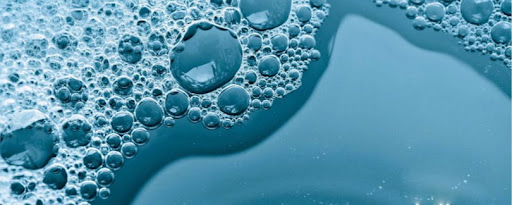

Defoamers & Antifoam
Applications in Oilfield Chemicals
Drilling Fluids:
Foam formation during drilling can hinder operations by causing fluid losses and reduced efficiency. Defoamers prevent this by breaking down foam and allowing better fluid management.
Production Operations:
Excessive foam during oil and gas production can lead to issues such as pump cavitation and reduced separator efficiency. Antifoams are added to minimize these problems.
Completion & Stimulation Fluids:
Defoamers are used in completion and fracturing fluids to ensure smooth pumping and efficient reservoir stimulation.
Refining Processes:
Antifoams help manage foam in desalters, cooling towers, and processing units to optimize productivity.
Key Benifits:
Improved Operational Efficiency:
Reduced foam ensures smoother drilling, production, and processing operations.
Reduced Equipment Wear:
Prevents pump cavitation and equipment failures caused by foam.
Enhanced Product Quality:
Minimizes contamination and ensures the purity of recovered hydrocarbons.
Regulatory Compliance:
Assists in meeting environmental and operational standards.
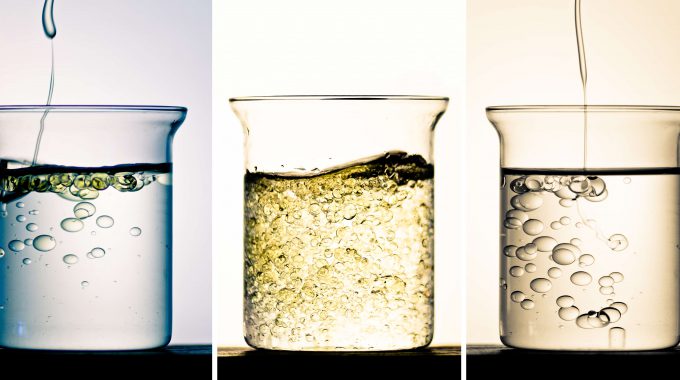

Emulsifiers & Chemical Additives
Applications Of Emulsifiers & Additives in Oilfield Industry
Drilling Fluids:
Emulsifiers help form oil-based or water-based mud systems that provide lubrication, stability, and temperature resistance.
Enhanced Oil Recovery:
Stabilizing water-in-oil emulsions to improve flow properties.
Production Chemicals:
Used in treating crude oil to remove water and salts (demulsification).
Our Range Of Emulsifiers & Additives
Drilling Additives:
Viscosifiers: To enhance the viscosity of drilling muds. Examples: Xanthan gum, Bentonite.
Defoamers: Reduce foaming in drilling fluids. Examples: Polydimethylsiloxanes, Glycol blends.
Shale inhibitors: Prevent the swelling of clay in shales. Example: Potassium chloride, Amine-based inhibitors.
Production Chemicals:
Corrosion inhibitors: Protect pipelines and equipment from corrosion. Examples: Amine-based compounds, Phosphates.
Scale inhibitors: Prevent the formation of mineral deposits. Examples: Phosphonates, Polycarboxylates.
Demulsifiers: Break water-in-oil emulsions during crude oil processing. Examples: Polyamines, EO/PO block copolymers.
Stimulation Additives:
Acid corrosion inhibitors: Protect metals during acidizing operations. Example: Quaternary ammonium compounds.
Friction reducers: Enhance hydraulic fracturing efficiency. Example: Polyacrylamide.
Completion Fluid Additives:
Brine stabilizers: Prevent precipitation and scaling in high-salinity fluids.
Biocides: Prevent bacterial growth in reservoirs. Examples: Glutaraldehyde, DBNPA.
Enhanced Oil Recovery (EOR) Chemical:
Surfactants: Lower interfacial tension for better oil displacement.
Polymers: Improve the viscosity of injected water for better sweep efficiency.
Non-Ionic Emulsifiers:
Used for high stability in varying pH and temperature conditions.
Anionic Emulsifiers:
Often used in water-based systems.
Cationic Emulsifiers:
Effective in specific oilfield scenarios, particularly for emulsified acid systems.

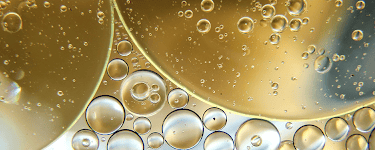
Surfactants for the Oilfield & Gas Industry
Applications Of Emulsifiers & Additives in Oilfield Industry
Drilling Fluids & Well Stimulation:
Reduces friction and enhances lubrication.
Improves fluid penetration for acidizing and hydraulic fracturing.
Enhanced Oil Recovery:
Reduces interfacial tension for better oil mobilization.
Improves reservoir wettability to maximize recovery.
Foam Control & Gas Well Treatments:
Used in foam-based EOR and well stimulation.
Enhances gas production by reducing liquid loading.
Nonionic Surfactants:
Used in demulsification, cleaning, and wetting applications.
Compatible with a wide range of oilfield fluids.
Anionic Surfactants:
Effective in reducing interfacial tension in acidizing and EOR operations.
Enhances wettability for better oil displacement.
Cationic Surfactants:
Used in corrosion inhibition and clay stabilization.
Helps control fines migration in reservoirs.
Amphoteric Surfactants:
Used in foaming applications for gas well treatments.
Provides stability across different pH levels.
Demulsification & Water Separation:
Breaks water-in-oil emulsions for faster separation.
Improves crude oil quality and reduces processing costs.
Our Range Of Surfactant Products


H2S Scavengers
Applications Of H2S Scavengers in Oilfield Industry
Downhole Treatment:
Added directly to the production stream to reduce H₂S levels at the source.
Gas Treatment:
Used in amine systems or directly injected into pipelines carrying sour gas.
Crude Oil Treatments:
Prevents corrosion in storage tanks and pipelines.
Reduces H₂S levels during transportation.
Our Range Of H2S Scavengers
Regenerative Scavengers:
Typically used in gas-processing facilities.
Can be reused after regenerating the absorbed sulfur.
Aqueous amines - diethanolamine (DEA) and monoethanolamine (MEA).
Non Regenerative Scavengers:
Single-use chemicals that react with H₂S to form stable byproducts.
Widely used in upstream applications and pipelines.
Products
Triazine-based scavengers.
Metal oxide-based scavengers (iron oxide).
Zinc-based scavengers.

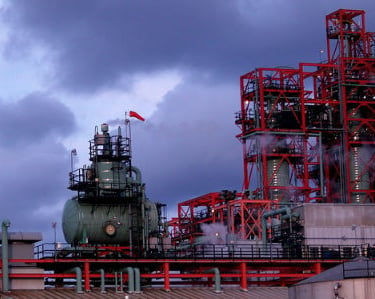
Special Solvents
Solvents for Well Stimulation & Enhanced Oil Recovery (EOR)
Xylene & Toluene:
Used to dissolve asphaltenes and paraffin deposits in production wells.
Improves crude oil flow and prevents blockages.
Methanol (MeOH) & Ethanol:
Used as hydrate inhibitors in gas pipelines to prevent ice-like hydrates from forming.
Also used in stimulation treatments.
Ethylene Glycol (EG) & Triethylene Glycol (TEG)
Dehydrates natural gas streams to prevent condensation and hydrate formation.
Essential in gas processing plants.
Dimethylformamide (DMF)
A powerful solvent for removing polar contaminants from hydrocarbons.
Solvents for Paraffin & Asphaltene Removal
Aromatic Solvents (e.g., C9, C10, C11 solvents)
Dissolve heavy organic deposits in production tubing and pipelines.
Commonly used in combination with surfactants.
Naphthenic & Aliphatic Hydrocarbon Solvents:
Used in crude oil cleaning and flow assurance.
Acetic Acid & Formic Acid:
Used in acidizing treatments to dissolve carbonates and improve permeability.
Less corrosive alternatives to hydrochloric acid (HCl).
Mutual Solvents:
Enhances acid penetration in formation stimulation.
Reduces emulsion tendencies in acidizing fluids.
Solvents for Gas Sweetening & CO₂ Removal
Remove hydrogen sulfide (H₂S) and carbon dioxide (CO₂)
Diethanolamine (DEA)
Monoethanolamine (MEA)
Methyldiethanolamine (MDEA)
N-Methyl-2-Pyrrolidone (NMP) & Sulfolane:
Used in gas treating for deep removal of acidic contaminants.
Solvents for Cleaning & Degreasing
Isopropyl Alcohol (IPA) & Acetone
Used for degreasing oilfield equipment.
Evaporate quickly, leaving no residue.
Dibasic Ester (DBE) Solvents
Used in pipeline cleaning due to low toxicity and high solvency power.

Your Partner In Everything Chemical
Manufacturers, Traders & Exporters of Chemicals for every industries.
SAles & Distribution
Request a catalog
exports@mesachem.in
+91 966 595 7191
© 2024. All rights reserved. MESA Modern Concepts Pvt LTD.
Exports Enquiry:
Registered Office:
MESA Modern Concepts Pvt LTD. 105 - Green Park, Vartak Wada, Vasai - W. Pin: 40201
Sales Office:
MESA Modern Concepts Pvt LTD. 27-2nd Floor, Swami Narayan Building, 60ft Road, Vasai - W. Pin: 401202.
Manufacturing & Coating Facility:
Bhosari MIDC, Taloja Phase 2, Navi Mumbai - 410208.
Call Us On:
quick links:
Construction Chemicals
Paints & Coatings
Lubricants & Greases
Water Treatment
Paper Industry
Food Colourings
Linear Alkyl Benzene & Derivatives
Isopropyl Alcohol
Polypropylene
Rubber Process Oils
